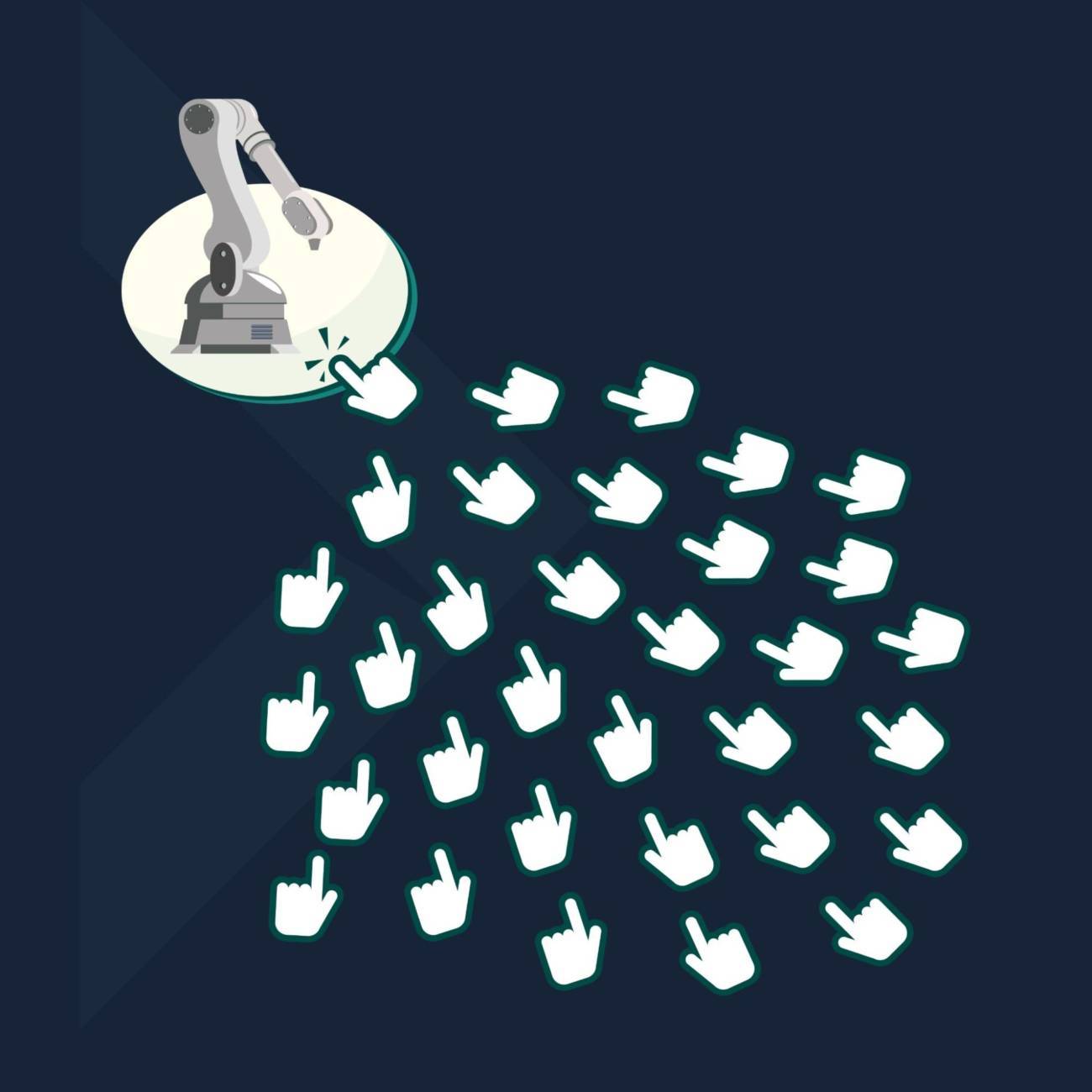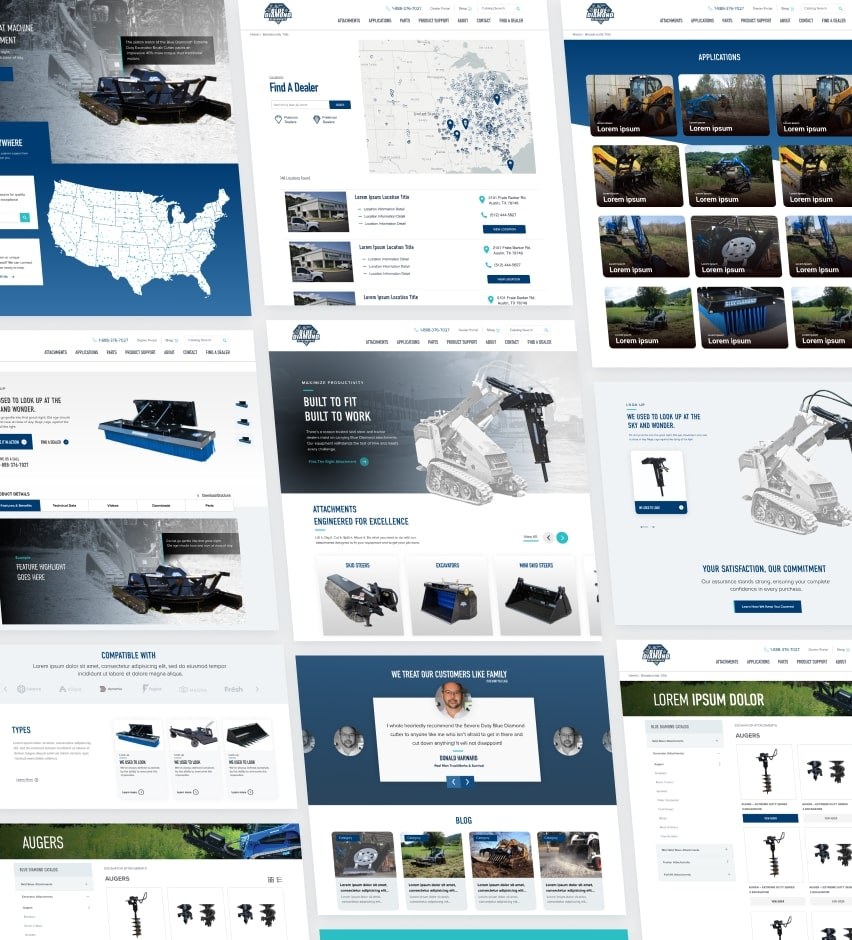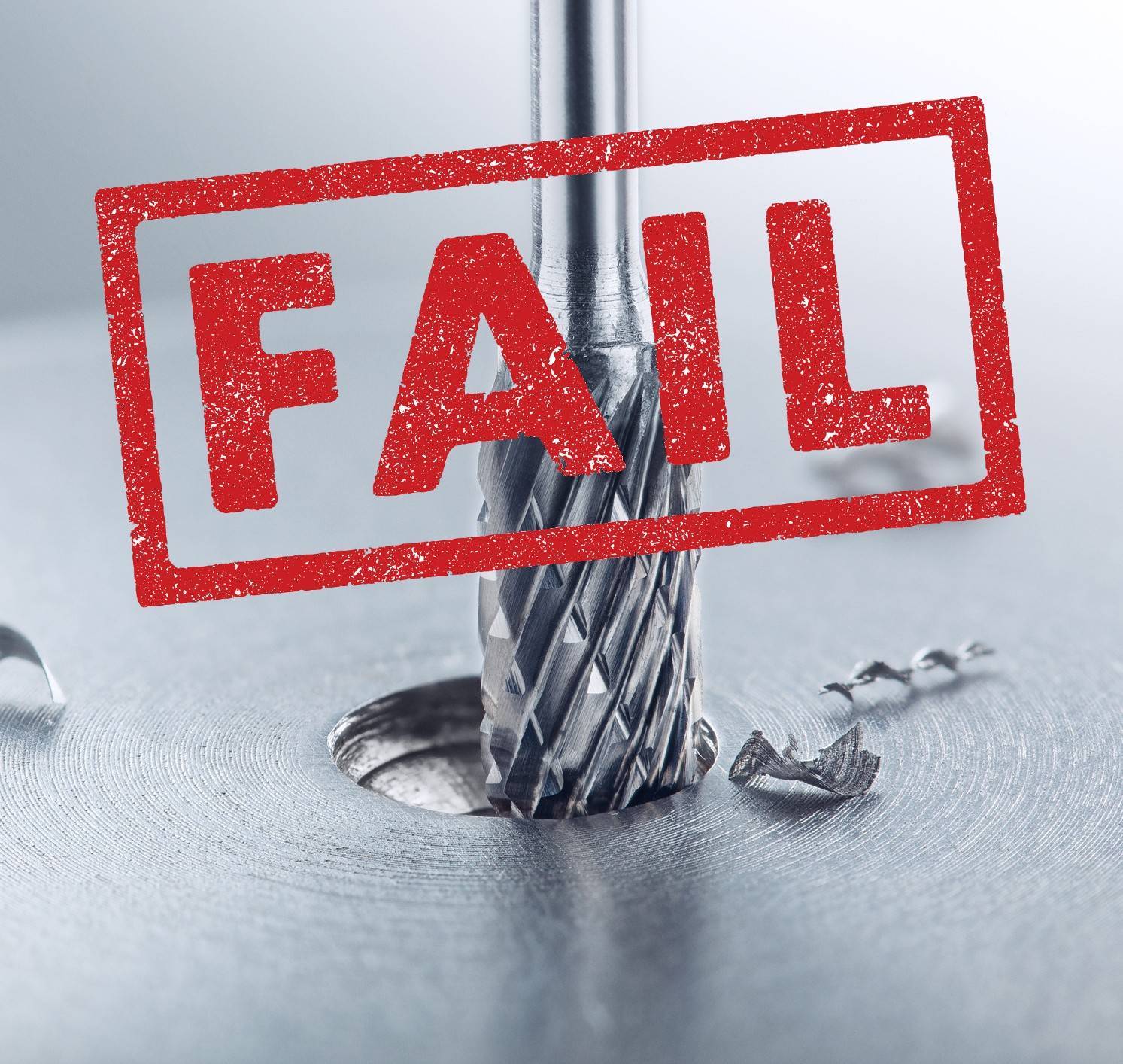

The Best Strategies to Drive Traffic to Industrial Websites
Savvy and successful B2B manufacturing companies rely on their websites to generate marketing qualified leads (MQLs). This requires marketing strategies that go beyond the early days of the internet, when manufacturing websites were little more than digital brochures.
Today, a manufacturer's website is the hub of all its marketing and sales efforts. The buyer’s journey often begins there–that is, assuming they discover and click through to that site before visiting a competitor’s website.
Manufacturing websites can vary between business types such as an OEM, distributor, manufacturing shop, and others. Each manufacturer has their own business goals and website marketing strategies that vary in application and execution.
This article explores options for driving traffic to your industrial website, including strategies and tactics that help manufacturing brands capture the attention of potential customers online.
Implement ongoing SEO (Search Engine Optimization)
The most effective method to organically generate website traffic is enticing users of search engines like Google and Bing to click through to your site when it is linked from search results pages. Search Engine Optimization (SEO) vaults your website to the top of search results, increasing traffic from search engines by improving the visibility of your website's high-traffic pages or blog posts.
Today’s technology-dependent (and tech-savvy) buyers know what they need from an industrial company's website: speed, usability, and valuable information. Search engines aren't much different, so performing SEO will also improve your industrial website's ability to serve both customers and prospects.
SEO also positions your brand as a thought leader when your site content is shown as the answer to common industry questions or queries submitted to these search engines. This helps introduce your brand to new and emerging audiences of potential industrial customers who want to visit your website and learn about your business.
Steps for Improving Organic SEO
Identify Intention-based Keywords
Identify keywords and phrases that capture the intentions and pain points of the user. The free Google Search Console captures the words and phrases visitors use to find your website. Paid tools include MOZ, SEMrush, and Ahrefs.
Study Ongoing Keyword Performance
Analyze your SEO strategies and keyword performance on a continuing basis to identify new and emerging opportunities. Paid SEO tools can compare your site and individual pages to your competitors, as well as monitor your performance for specific and high-priority keywords related to your products or services.
Leverage Metadata on Pages
Take advantage of code-based elements such as title tags, descriptions, header tags, and image alt text. Make sure the metadata throughout the website includes your targeted keywords that send even more signals to search engines about your industry expertise.
Consider Posting to Social Media
Don’t ignore the potential of posting on certain social media feeds. Sometimes your posts can appear in search results, and traffic clicking to your social platforms can also signal to search engines that your website content has value.
Publish High Quality Content
Winning SEO for industrial companies requires producing thoughtful, helpful, and unique website content, which is discussed later in this article. Landing pages and supporting articles should be written based on the keyword research.
Convert More Visitors with Technical SEO
 Understanding technical SEO and implementing strategies within the manufacturing and industrial environment remains one of the most valued exercises in driving the target audience to your website.
Understanding technical SEO and implementing strategies within the manufacturing and industrial environment remains one of the most valued exercises in driving the target audience to your website.
How is technical SEO different from content SEO? Simply put, technical SEO involves fine-tuning your website’s performance based on defined criteria. It involves the underlying code of your website.
Search engines recognize high-performance websites and direct relatively more traffic to these websites because they offer a better user experience.
A manufacturer’s website may have high-quality content with all the right keywords and suffer in search performance if the site is slow, for example.
Whether you do it yourself or hire an SEO agency, improving user experiences through technical SEO helps web traffic to stay longer on your website, increasing your chances of generating leads. This also elevates search performance, especially with Google’s latest updates related to page experience and core web vitals.
Some Steps for Improving Technical SEO
- Use a website scanning tool (e.g. ScreamingFrog) to identify weaknesses such as broken links and missing meta information.
- Google’s free Lighthouse tool evaluates your website for adherence to best practices (here's how to use it).
- Implement structured design using the correct hierarchy of header tags. (H1 > H2 > H3, etc.)
- A solid internal linking plan connects relevant content and signals the relevance of related pages to search engines.
- Optimize image sizes to avoid slow-loading pages due to large media files.
- Learn more about technical SEO, what it is, and how to do it.
Build awareness in the industry with content marketing

One of the best ways to elevate how your customers and clients perceive your brand is through content marketing.
And that means more than publishing articles in a blog.
Content marketing supports users in the various stages of the buyer journey. The right content fulfills the customer's needs with the correct information at the point it’s needed. That’s the value of everything outlined in the earlier section about SEO.
Content is a toolbox, and choosing the right tool efficiently completes the job.
Ideas for Content Marketing
- Blog articles can meet users' needs at any buyer journey stage.
- Interactive infographics can distill complex information better than a narrative approach.
- Comparison and search tools help users at the consideration stage narrow their options.
- Videos, like blog articles, can attract users at the discovery stage through a video on social media. At the decision stage or after the purchase, videos can offer helpful instructional information.
- Case studies and testimonials offer social proof to support your brand.
- E-books and white papers help demonstrate thought leadership and expertise.
Prospects are much more likely to purchase from brands they recognize, and the trust is based on your messaging and the quality of content.
When people know your brand, your position is secured in the industry. Customers value doing business with brands that share their values and opinions.
Customers love purchasing from brands that share their values and opinions. If you’re an active member of your community, this can be extremely valuable to your content marketing strategy.
While organic search goes a long way to getting your content in front of your audience, there are additional steps for driving traffic:
- Identify partners willing to link to your content from their own websites.
- Create versions of the content for trade publications to feature your business or offerings.
- Use email campaigns to promote announcements and link subscribers to new content.
Narrow your targeting with PPC campaigns
 Some companies rely heavily on pay-per-click (PPC) keyword marketing. Studies show mixed results.
Some companies rely heavily on pay-per-click (PPC) keyword marketing. Studies show mixed results.
Paid promotion can build quick awareness of a new product or service when combined with organic search. It gets you to the top of sponsored search rankings.
A good example is search engine marketing, which places your ad with a link to your website at the top of Google search results when a person searches for a keyword related to your services. The ad platform charges you a fee each time a user clicks on your ad.
With PPC campaigns, you pay a fee to platforms like Google or Bing to drive traffic every time one of your ads is clicked, and the person visits your website.
New manufacturing capabilities can be effectively promoted through PPC if supported by great landing pages and bidding strategies. The best thing about a good PPC campaign is that it can pull in users who are in the buying stage.
Steps for Improving PPC Performance
- Choose keywords wisely. Short popular keywords cost significantly more when a user clicks through. Identify “long-tail keywords” as an alternative. Pinpoint accurate long-tail keywords that match the specific buyer intention. You’ll pay less per click and reach a potential buyer who knows exactly what she wants.
- Create compelling content with solid messaging that addresses needs and pain points.
- Design a landing page that effectively converts visitors who want to make a purchase or request information.
- In addition to identifying keywords that will attract buyers, identify "negative keywords" that prevent your ads from showing up for less relevant searches.
Reach industrial prospects and customers through email marketing
 To get the most out of your email marketing strategy, you must build a strong campaign that ensures your subscribers get the correct information at the right time.
To get the most out of your email marketing strategy, you must build a strong campaign that ensures your subscribers get the correct information at the right time.
Email marketing is not only great for staying top of mind but is also strategically used for driving interest in new products or developments at the company.
You can quickly inform them with news about your company, tips that help them accomplish their goals, and content like free guides.
Emails are great touchpoints for following up after events like tradeshows.
Steps for Improving Traffic From Email
- A/B test subject lines to increase open rates
- Segment your email. Subscribers will trust you more if they only receive emails that interest them.
- Align the messaging on the landing page so users remain engaged.
- Define the purpose of the email with concise, action-oriented calls to action (CTAs).
Build brand awareness with social media.
 Whether a manufacturing company sells a product offers a service, or simply creates content, social media helps grow brand awareness.
Whether a manufacturing company sells a product offers a service, or simply creates content, social media helps grow brand awareness.
Being active on the right social media platforms helps drive traffic to your website. This is why social media branding has become popular.
A digital strategy should identify which social networks you must be on and how to engage with prospective audiences there. There will likely be only a handful of social networks where you need to be.
As a manufacturer, you must identify if your target audience participates in social media channels like LinkedIn, Facebook, Twitter, or Instagram.
YouTube also drives traffic with links from video descriptions. Search engines display videos prominently.
Also, paid social advertising allows you to create sponsored ads on social platforms. Social media ads reach more potential customers.
Steps for Increasing Website Traffic From Social Media
- Maintain your brand's voice across all social media channels. While the tone of posts may change, the voice remains consistent.
- Leverage hashtags to increase discoverability. Unique hashtags can attract attention. These are often used on Instagram.
- Respond to comments and engage with users who share your posts.
- Use social media to attract new email subscribers.
Implement website accessibility

WCAG compliance assures an optimal experience for all users.
Businesses often promote their commitment to diversity and inclusion. Companies want to be viewed as supporting equal opportunities, and many businesses have developed comprehensive policies that embrace a more diverse workforce and support all of their customers better, especially regarding their online reputation.
An accessible website opens your "digital front door" to millions of web users with disabilities, including those with permanent vision loss or age-related vision difficulty. Web accessibility addresses the needs of all users and helps you meet legal compliance requirements, especially internationally.
This also translates to more traffic because website accessibility is a best practice for SEO (search engine optimization). Once your website content is accessible, it is likely to rank higher in search results organically and attract more visitors.
Embracing accessibility and becoming inclusive to all customers sets you apart from your competition. Your products and services will be perceived as more credible and authentic, winning your brand recognition.
Simple Steps to Begin Improving Website Accessibility
- Create straightforward site navigation to support voice control.
- Develop the site to attract users through voice search from smart speakers and mobile devices.
- Produce content that appeals to the broadest appropriate educational levels.
- Submit an accessible site map to search engines.
- Produce multilingual content if doing international business.
Ready to Elevate Your Industrial Brand?
Websites for industrial manufacturers attract more traffic through a multi-faceted approach to inbound marketing that centers on a high-performance website that delivers a competitive edge. Taken as a whole, these steps enhance visibility, credibility, and customer engagement for industrial businesses.
Expertise in optimizing search engine rankings, creating compelling content, and ensuring inclusivity through accessible websites is crucial. This comprehensive approach positions manufacturing companies as industry leaders and fosters long-term customer relationships, ultimately driving sustainable growth in the competitive digital landscape.
Contact DBS for a free consultation to learn how we drive more traffic to your manufacturing website.




